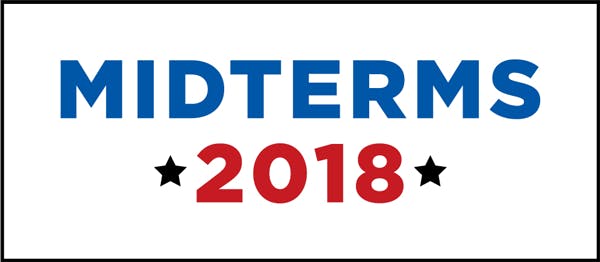In an interview after Alexandria Ocasio-Cortez’s victory in June over incumbent Congressman Joe Crowley, Tom Perez, the chairman of the Democratic National Committee, called the 28-year-old “the future of our party.”
Soon, leading Democratic presidential aspirants Kirsten Gillibrand and Elizabeth Warren had endorsed her signature demand: to “abolish ICE,” the Immigration and Customs Enforcement agency. Even Bernie Sanders, after initial demurrals, called for eliminating “the cruel, dysfunctional immigration system” and Kamala Harris for “starting from scratch” when it came to ICE. Only Cory Booker balked, calling for hearings on whether immigration enforcement “might be achieved better in other ways.” These Democrats had already signed on to other parts of Ocasio-Cortez’s platform: All five had demanded Medicare for All; Sanders, Booker, and Gillibrand had also endorsed a federal jobs guarantee.
These sharp moves to the left are supposed to be good for the country—and for the Democrats. Yet they would likely prove disastrous in a general election. The fact that growing numbers of Democratic politicians seem to support them suggests that they have not figured out how to resurrect themselves as a party. To do that, they need to reclaim many of the voters in the Midwest and Mid-Atlantic who backed Democrats in 2006 and 2008 but sided with Trump in 2016. These kinds of programs will, if anything, drive those voters away.
The political problem for Democrats can be expressed in geometric figures. The older Democratic majority, which dominated American politics from 1930 to 1968, was rooted in the working and middle classes. It was shaped like a pyramid, with Democratic support declining toward the top as income and education rose. Beginning in the 1970s, however, as the white working and middle classes, which had been the bulwark of the old party, began to vacate it, it increasingly resembled an hourglass that bulged with working-class minorities at the bottom and upper-middle-class professionals near the top.
This hourglass coalition, which Ruy Teixeira and I described in our 2002 book, The Emerging Democratic Majority, could win elections as long as Democrats carried about 40 percent (lower in the South but higher elsewhere) of the white working class. In the 2016 presidential election, Hillary Clinton got only 29 percent of these voters. In the crucial swing state of Ohio, she got 33 percent.
Democrats often point out that Clinton won almost three million more votes than Trump. But in presidential elections, what matters is who wins states. Moreover, at the House level, it was Republicans who actually won the popular vote, suggesting that a less toxic candidate than Trump could have done much better.
Some Democratic leaders now rest their hopes on Hispanics and Asians, who they believe will, along with African Americans, create a majority-minority electorate like that of California, which overwhelmingly favors Democrats. Yet these minorities—as they assimilate and intermarry, effectively becoming “white” themselves, a trend documented by demographer Richard Alba—may increasingly follow the pattern of Italians, Irish, and other European immigrants and vote in a similar manner to other “whites” of comparable income and education. In this, Texas (where even Trump won more than a third of the Hispanic vote), not California, may be prophetic.
Another alternative exists for Democrats worried about their future: to recapture parts of the white working and middle classes that they have lost over time to the Republicans. This group, which makes up the largest plurality of voters, can still sway elections toward Democrats, as they did in 2006, when the party reclaimed both the House and the Senate with their help, and later, in 2008 and 2012, when Barack Obama won the Rust Belt. Sanders was seeking to do the same in 2016, but it’s not clear that if he had been nominated, he would have defeated Trump. The problem, as the Democrats’ embrace of the bulk of Ocasio-Cortez’s program shows, is that they harbor assumptions that put them at odds with much of middle America.
Take the debate over ICE. Most Americans believe the immigration enforcement system in this country needs reforming, as polls favoring the extension of Deferred Action for Childhood Arrivals and the recent outrage over the president brutally separating the children of illegal migrants from their parents demonstrate. But the slogan “abolish ICE” suggested that Democrats wanted to abolish not only the agency but also the deportation of any illegal immigrants—something that runs afoul of public support. A Harris-Harvard poll conducted in late June found the public against disbanding ICE by 69 to 31 percent. Democrats were opposed by 59 to 41 percent. When framed this boldly and not simply as reform, even Hispanics were split 50 to 50. The House Hispanic Caucus opposes abolition. If Democrats were hoping the slogan would be enthusiastically received by Latinos, they were wrong.
A better case can be made for expanding Medicare to cover those under age 65. Managing such a program would be extraordinarily complicated, but the federal government and states are already running a combination of Medicare and Medicaid that covers over a third of the population; the slogan Medicare for All is also increasingly popular among many Democrats—it helped Sanders in the 2016 primaries. But Medicare for All might not work as well in pale blue states like Colorado, where its supporters put a referendum on the ballot in 2016 that would have created a state single-payer system. Wary of higher taxes, Coloradoans defeated it 79 to 21 percent. It could prove even less popular in Midwestern states where white working-class voters are an even larger portion of the electorate—and have regularly opposed higher taxes and programs that require them (in their eyes) to subsidize the idle or incompetent poor. It’s not necessarily a commendable perception—it can be fed by racism as well as by the Protestant ethic—but any program that aspires to expand the welfare state has to take it into account.
Perhaps the most radical proposal backed by Ocasio-Cortez, Sanders, Booker, and Gillibrand is the federal jobs guarantee. Crafted this year by economists William Darity Jr., Darrick Hamilton, and Mark Paul, it would “provide a job, at non-poverty wages, for all citizens above the age of 18 that sought one.” The authors estimate the cost at $543 billion a year, but that’s with 4.1 percent unemployment. During a recession, the cost could rise to $2 trillion, or roughly half the current federal budget, and lead to huge tax increases. The program also raises the feared specter of big government. The federal government is currently far from capable of creating 12 or 22 million jobs, as Josh Bivens from the Economic Policy Institute notes. The Labor Department, where the authors suggest placing the program, would have to become the size of the Pentagon during wartime. While polls have registered initial support for a guarantee of full employment, its support would plummet during a general election as voters were made to realize what it would cost in taxes and how it would transform the federal government into an unwieldy and potentially inefficient behemoth.
None of these observations may matter in the 2018 congressional elections. Democrats (and Republicans) can be expected to run campaigns that speak to their different states and districts. Ocasio-Cortez can advocate the abolition of ICE in her district, which favored Clinton by 77 to 21 percent in 2016, without fearing retribution from her voters. In Arizona, Democrats will take a different tack. (Congressman Ruben Gallego and Senate Democratic candidate Kyrsten Sinema already are.) The races in November 2018 will be fought over the person of Donald J. Trump.
But if Democrats are looking beyond 2018, and if they want to win back the erstwhile Democrats who backed Trump in 2016, they need an outlook that respects borders, takes heed of American individualism, and respects skepticism about taxes and big government. That doesn’t mean embracing conservatism. Americans can be guaranteed national health care with a mix of public and private insurance; the government can boost the labor market through needed large-scale infrastructure programs; and borders can be policed, and illegal immigration discouraged, without separating children from their families or branding Mexican immigrants as criminals. The point is not to move to the right but to move to the left while recognizing basic values that many Americans hold about government and their lives.
Does that mean that Americans will never accept a big government program like Medicare for All? No, but Americans have only acquiesced to dramatic increases in the scope and power of government in extreme situations—in economic crises like that in the 1930s, which affected the middle as well as the bottom of society; in the face of militant insurgencies that threatened social disruption (as occurred in the 1960s); or in time of war. None of these conditions prevails right now. Those who advocate more advanced objectives can agitate and educate, but as far as countering a reactionary Republican Party nationally, they must bide their time.
Correction: A previous version of this article incorrectly stated that Senator Cory Booker has endorsed abolishing ICE. We regret the error.

